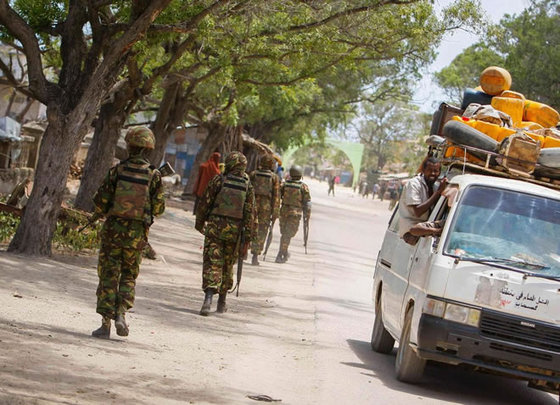|
Although AMISOM, Somali forces, and the Ras Kamboni Brigades retook Kismayu from Shabaab in September 2012, trouble persists in the port city. Image from Hiiraan Online. |
Two days ago, Isse Mohamed Alaaki, a respected security official also known as Isse Kamboni, was assassinated by Shabaab. Isse had been appointed to his post in October and was a close associate of Interim Jubba Administration leader Ahmed Madobe.
Isse was killed while traveling by car with three of his bodyguards. One of them, who was both a close relative and former Shabaab member, opened fire, gunning down Isse and the two other bodyguards before escaping. Shabaab has subsequently claimed responsibility for the attack.
Isse Kamboni is believed to have been a Kenyan of Somali origin, and although he was affiliated with the Ras Kamboni Brigade, he had served as a Hizbul Islam commander while fighting the Ethiopian army in Mogadishu. The Ras Kamboni Brigade was one of four major groups in Hizbul Islam before joining Shabaab in 2010. A faction led by Ahmed Madobe split from the Ras Kamboni Brigade and allied with the government. Kamboni was also an important figure in the Ahmed Madobe Ras Kamboni Brigade that supported the Kenyan Defense Forces operation that drove Shabaab out of Kismayu in 2012.
The Shabaab attack in Kismayu has occurred at a tense time for the city. After the Somali Transitional Federal Government (TFG) complained that Kenyan troops were interfering with its attempts to assert authority, Kenya announced a few weeks ago that it would decrease its troop presence in Kismayu and hand over duties to soldiers from Sierra Leone.
The TFG had complained last June that the KDF was too close to Ahmed Madobe, the current Jubbaland Interim Administration president who is also leader of the Ras Kamboni Brigade. This prompted Kismayu residents to protest and accuse the TFG of attempting to bring back past hostilities by replacing Kenyan troops with “a weaker Sierra Leone contingent.”
Despite a military offensive led by the African Union and backed by the US that began in 2011, Shabaab still controls vast areas of southern and central Somalia. During the offensive, Shabaab was driven from major cities and towns such as Kismayo, as well as the Somali capital Mogadishu, and Baidoa, but towns such as Bulobarde and Barawe remain under the terror group’s control. The group has weathered the Ethiopian invasion, which began in December 2006 and ousted its predecessor, the Islamic Courts Union. More than six years later, Shabaab remains a capable force in southern Somalia and an integral part of al Qaeda’s global network.
Are you a dedicated reader of FDD's Long War Journal? Has our research benefitted you or your team over the years? Support our independent reporting and analysis today by considering a one-time or monthly donation. Thanks for reading! You can make a tax-deductible donation here.








